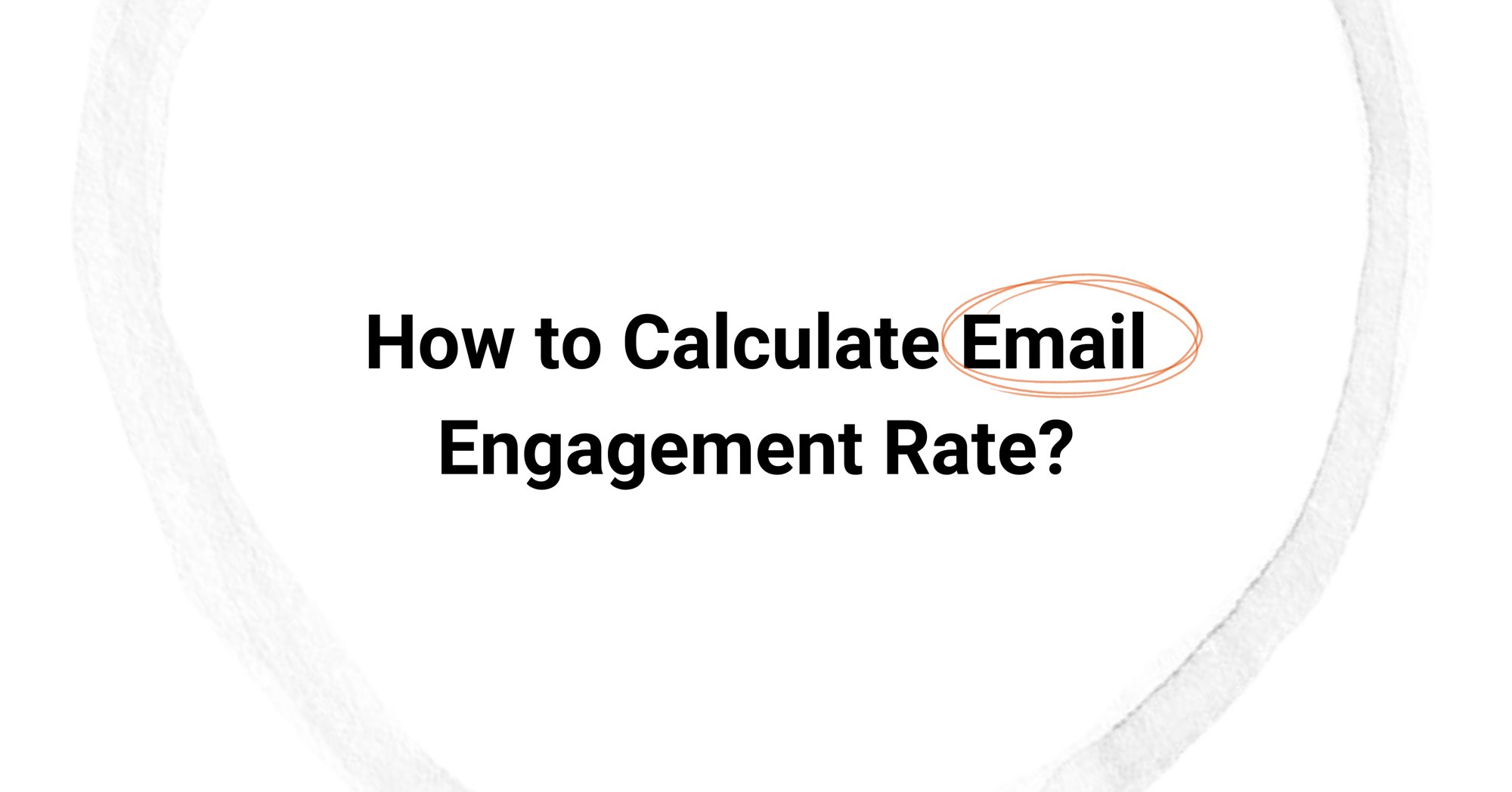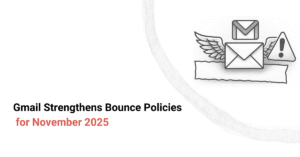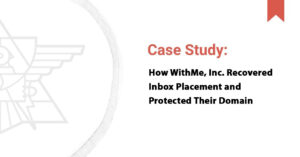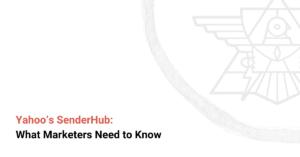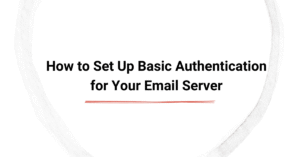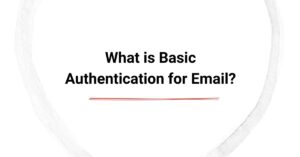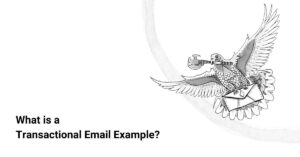Do you know how your emails are truly performing beyond open rates and click rates? While open rates and click rates are useful, they don’t always give you the full picture. That's where how to calculate email engagement rate comes in. Understanding your engagement rate helps you get a clearer view of how recipients are interacting with your content and allows you to optimize your strategy.
In this guide, we'll break down how to calculate email engagement rate, why it's essential for your email marketing strategy, and how you can improve it. Whether you’re running email campaigns for a SaaS platform, eCommerce store, or marketing agency, understanding and measuring engagement will help you track performance and optimize your approach.
Engagement rate is a better indicator of how well your emails are connecting with your audience. It’s about measuring the actual interactions recipients have with your emails: opens, clicks, replies, and more. The higher the engagement, the better your chances of improving your deliverability, sender reputation, and ultimately, conversions.
What Is Email Engagement Rate?
Email engagement rate refers to the actions recipients take after receiving your emails. These actions could include opening the email, clicking on links, replying, forwarding, or completing a call to action (CTA) like downloading a resource or filling out a survey.
In short, it's a measure of how engaged your recipients are with the content you're sending them.
Types of Engagement Actions
Here are some common engaged actions to consider when calculating engagement rate:
- Opens: When a recipient opens the email, they are engaging with your content. However, open rates on their own can be misleading, especially with tracking issues like image blocking.
- Clicks: When a recipient clicks on a link in the email, it shows active engagement. Clicks are a key metric in measuring how much your content resonates.
- Replies: In B2B emails, replies are a strong indicator of engagement, as they show a deeper level of interaction.
- CTAs: Actions like downloads, form submissions, or survey completions are essential in measuring engagement in more complex campaigns.
Tracking these actions helps you measure the success of your email campaigns and adjust your strategy accordingly. You’ll also have a clearer understanding of how your email content resonates with your audience.
Why Email Engagement Matters
Engagement rate isn’t just another metric. It directly impacts the overall performance of your email marketing campaigns. Here's why it's so important:
Impacts Sender Reputation
The more people engage with your emails (by opening, clicking, and replying), the better your sender reputation becomes. High engagement rates show email service providers that your emails are relevant and wanted by recipients, reducing the likelihood of being marked as spam.
Affects Inbox Placement
Higher engagement rates signal to ISPs that your emails are wanted and helpful. This can improve your inbox placement rate, ensuring your emails land in the inbox rather than the spam folder.
Leads to Better Conversion Rates and Campaign Performance
Higher engagement typically translates to better conversion rates. If your subscribers are opening and clicking your emails, they’re more likely to convert, whether it’s signing up for a demo, making a purchase, or interacting with your brand in another way.
Tracking email engagement metrics like this lets you assess whether your emails are meeting your business goals, or if you need to change your approach.
How to Calculate Email Engagement Rate
Now that we understand what email engagement is and why it’s so important, let’s break down how to calculate email engagement rate.
Simple Formula for Email Engagement Rate
The basic formula for email engagement rate is:

Let’s break this down:
- Total Engaged Actions: This includes all the interactions your subscribers have with your email: opens, clicks, replies, and other CTA completions.
- Total Emails Delivered: This refers to the emails that were successfully delivered to recipients, excluding any bounces.
For example, if you sent 1,000 emails and received 150 engaged actions (opens, clicks, replies), your email engagement rate would be:This gives you an idea of how many people took some action after receiving your email, and it’s a valuable metric for tracking the success of your email campaigns.
Breakdown of “Engaged” Actions
When calculating your email engagement rate, it’s important to clearly define what counts as an "engaged" action. Here are a few examples:
- Opens: Someone opening your email is an indicator of engagement, though it’s less valuable than clicks or replies. But it’s still a critical part of the overall picture.
- Clicks: Clicking on links in the email is a stronger indicator of engagement, as it means the recipient interacted with the content.
- Replies: For B2B campaigns, replies can indicate a high level of engagement. These types of emails often require a direct response, which can signal that the recipient is truly engaged.
- CTA Actions: If your email includes a specific call to action, such as downloading a white paper or signing up for a webinar, this action is a clear sign of engagement.
Let’s take a closer look at some alternative engagement metrics.
Alternative Engagement Metrics
In addition to the overall email engagement rate, there are other important metrics that can give you deeper insights into how engaged your audience is with your content.
Click-to-Open Rate (CTOR)
The Click-to-Open Rate (CTOR) helps you understand the effectiveness of your email content. It’s useful for identifying how engaging your actual message is after the recipient opens the email.
Engaged Subscribers Rate
This metric focuses on how many of your subscribers are actively engaging with your emails. You can calculate this by looking at the number of subscribers who click, reply, or take other actions, divided by the total number of subscribers.
Time Spent Reading Emails
While this one’s harder to track directly, knowing how long subscribers are spending reading your email gives you insight into how engaged they really are. Longer reading time suggests your content is holding their attention.
Reply Rate (For B2B)
In B2B email campaigns, replies are a strong signal of engagement. The reply rate can be calculated by dividing the number of replies by the total number of emails sent. This is particularly important for campaigns aiming to generate sales conversations or responses.
Email Engagement Benchmarks
Understanding what a “good” engagement rate looks like is key to knowing how well your emails are performing. Engagement benchmarks can vary based on your industry, but here’s a general guide:
- SaaS: Engagement rates tend to be high in SaaS companies, where emails are often personal and highly targeted. Aim for a 15-20% engagement rate.
- eCommerce: Engagement rates may be lower in eCommerce, but that’s to be expected given the volume of emails sent. An engagement rate of 10-15% is typical.
- B2B Tech: For B2B tech emails, engagement can be measured through replies and clicks on product demos, and an engagement rate around 12-18% is healthy.
If your engagement rate is higher than the industry average, you’re on the right track. But if it’s lower, it might be time to rethink your subject lines, content, or segmentation strategies.
Tips to Improve Your Engagement Rate
Now that you know how to measure email engagement, let’s talk about how to improve it. Here are some tips:
Personalization and Segmentation
One of the best ways to increase engagement is by sending relevant, personalized emails. Segment your target audience based on behaviors, interests, or demographics to ensure the right message goes to the right person.
Better Subject Lines
The subject line is the first thing people see, so make sure it grabs their attention. A compelling subject line can significantly improve your open rate, which ultimately boosts engagement.
Mobile-Friendly Design
More people are checking their emails on mobile devices than ever before. Make sure your emails are optimized for mobile by using responsive design. This ensures that recipients will engage with your content regardless of device.
Send-Time Optimization
Experiment with different sending times to find out when your audience is most likely to engage. Tools like A/B testing can help you fine-tune the best send times.
List Hygiene and Targeting
Regularly clean your email list to ensure you’re targeting the most engaged subscribers and welcoming new subscribers into a healthy, active list. Remove inactive or unengaged users to avoid damaging your sender reputation.
Conclusion
Email engagement rate is a crucial metric for understanding how well your email campaigns are performing. It goes beyond open and click rates, giving you deeper insights into how recipients interact with your emails. By calculating your email engagement rate using the formula we discussed and implementing best practices, you can enhance your email performance and drive better results.
Need help improving your email engagement rate? Book a strategy session.

